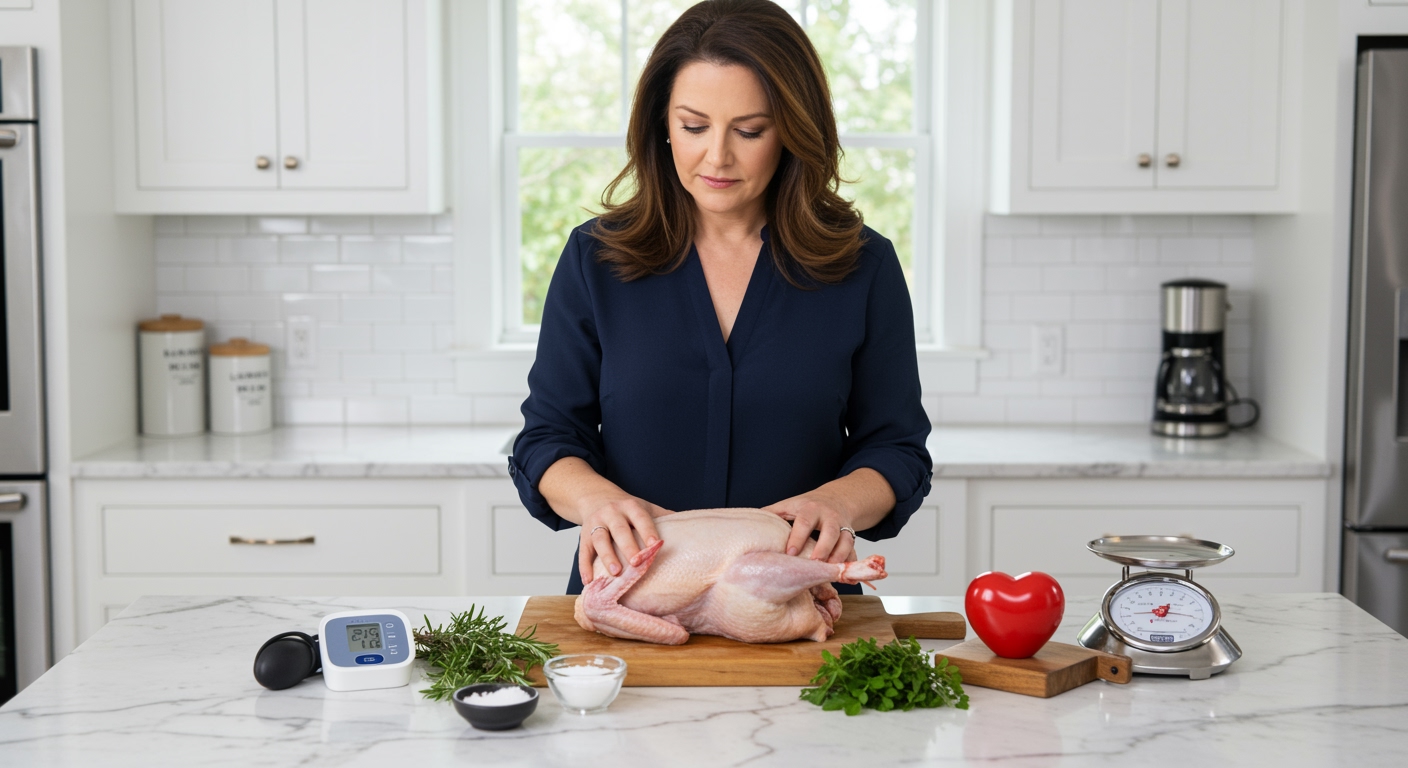✪ Key Takeaway: Guinea fowl is safe for hypertensive patients when prepared without added salt and consumed in appropriate portions.
Introduction
Your doctor just told you to watch your blood pressure, and now every food choice feels like walking through a minefield.
You might be wondering about guinea fowl because someone mentioned it as a healthier alternative to chicken, but you are not sure if this exotic bird fits into your heart-healthy eating plan.
Hi, I am Abdur, your nutrition coach, and today I am going to explain everything you need to know about guinea fowl safety for people managing high blood pressure.
What Makes Guinea Fowl Different From Regular Chicken?
Guinea fowl contains significantly less fat than chicken, making it an excellent choice for cardiovascular health.
A 100-gram serving of guinea fowl provides about 110 calories compared to 165 calories in the same amount of chicken with skin.
The protein content remains high at approximately 23 grams per serving, which helps maintain muscle mass without adding unnecessary calories to your diet.
Guinea fowl naturally contains lower sodium levels than many commercial chicken products, which often undergo brining or processing that increases salt content.
The meat has a slightly gamey flavor similar to pheasant, but the nutritional profile makes it worth considering for heart health.
Wild guinea fowl tends to be even leaner than farm-raised varieties because of their active lifestyle and natural diet.
✪ Fact: Guinea fowl contains 40% less saturated fat than chicken, making it heart-friendly for hypertensive patients.
How Does Guinea Fowl Affect Blood Pressure Directly?
Guinea fowl provides potassium at levels that can help counteract sodium effects on blood pressure regulation.
The potassium content helps your kidneys eliminate excess sodium through urine, which reduces fluid retention and eases pressure on blood vessel walls.
This lean protein source supports weight management, and maintaining a healthy weight directly correlates with better blood pressure control.
The amino acid profile in guinea fowl includes arginine, which helps produce nitric oxide in your blood vessels.
Nitric oxide acts as a natural vasodilator, helping blood vessels relax and allowing blood to flow more easily with less pressure.
Unlike processed meats that contain nitrates and excessive sodium, guinea fowl in its natural form supports rather than hinders cardiovascular function.
✪ Pro Tip: Pair guinea fowl with potassium-rich vegetables like spinach or sweet potatoes for maximum blood pressure benefits.
What Cooking Methods Work Best For Hypertensive Patients?
Roasting guinea fowl without added salt allows the natural flavors to shine while keeping sodium levels low.
Use herbs like rosemary, thyme, and garlic instead of salt-based seasonings to enhance taste without compromising your blood pressure goals.
Grilling helps render excess fat while creating delicious flavor through caramelization rather than relying on high-sodium marinades.
Avoid frying guinea fowl in oil, as this cooking method adds unnecessary calories and may contribute to weight gain that worsens hypertension.
Braising in low-sodium broth with vegetables creates a heart-healthy meal that provides additional nutrients from the cooking liquid.
Remove the skin before cooking to eliminate most of the saturated fat content, which can contribute to arterial inflammation when consumed regularly.
Marinating guinea fowl in citrus juice, vinegar, or wine tenderizes the meat naturally without requiring salt-heavy commercial marinades.
✪ Note: Always use a meat thermometer to ensure guinea fowl reaches 165°F internal temperature for food safety.
Are There Any Risks Or Precautions To Consider?
Guinea fowl may contain higher levels of purines than chicken, which could be problematic if you also manage gout alongside hypertension.
People taking blood thinning medications should consult their healthcare provider before adding new protein sources to their regular diet.
The portion size matters significantly, as even healthy proteins can contribute to weight gain when consumed in excessive amounts.
Stick to 3-4 ounce servings, which provide adequate protein without overwhelming your daily calorie budget or sodium intake.
Some people experience digestive sensitivity to game birds, so start with smaller portions to assess your tolerance.
Always source guinea fowl from reputable suppliers to ensure proper handling and reduce risk of foodborne illness, which can stress your cardiovascular system.
✪ Pro Tip: Keep a food diary to track how guinea fowl affects your blood pressure readings over several weeks.
The Bottom Line
Guinea fowl is not only safe for hypertensive patients but can actually support your blood pressure management goals when prepared properly.
The best foods for managing blood pressure are those that work with your body, not against it, and guinea fowl fits perfectly into this philosophy with its lean protein profile and natural nutrient content.
I would love to hear about your experiences with guinea fowl or any questions you have about incorporating new proteins into your heart-healthy eating plan, so please share your thoughts in the comments below.
References
At NutritionCrown, we use quality and credible sources to ensure our content is accurate and trustworthy. Below are the sources referenced in creating this article:
- A-Z Animals: Guinea Fowl Meat
- University of Rochester Medical Center: Nutrition Facts
- UH Hospitals: Guinea Hen Meat Nutrition
- SparkPeople: Guinea Calories





